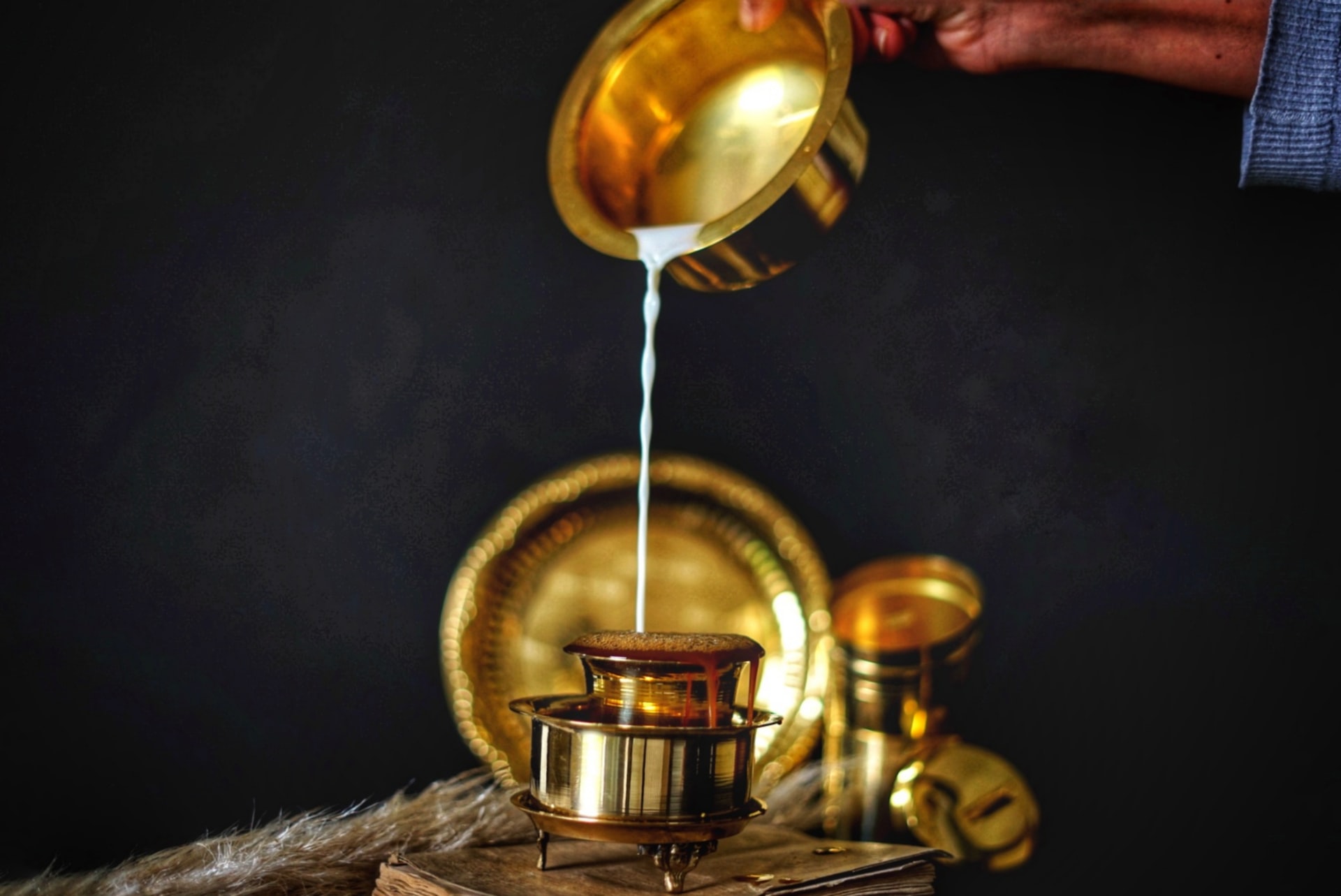
Indian Coffee: India’s Transition from Tea to Coffee
Indian Coffee: India’s Transition from Tea to Coffee
- Mo Bent
- 10-02-2022
- 29-07-2025
- 2051 views
- Coffee Shop, Featured Articles, Information

Hey! Meet our newest nation on the coffee scene!
The Indian subcontinent is one of the places where people produce and consume a lot of tea. It is consumed in three different manners – plain, in milk, or with spices. The average consumption per person per day is around 300 ml, making India the biggest tea market by volume. Person per day means around 140 liters per year. That’s approximately 700 million kg of tea every year! During the financial year 2021, the tea consumption of India was a whopping 1.1 billion kilograms.
According to competition-supplying bodies, more than 20 percent of global tea production can be attributed to India alone.
History of Tea in India
To start, tea has been a staple of Indian society for thousands of years. The first record of tea in India came from the 3rd century BC when Chinese traders introduced tea to India, where it quickly became popular. Over time, tea became ingrained in Indian culture. And when the British came to India to colonize the area, they embraced tea as well—eventually leading to the spread of tea across Europe and the rest of the world.
However, recently India has begun a transition from tea to coffee. Coffee shops are cropping up all over India, and coffee has become increasingly popular with younger generations. This transition has been fueled by changing tastes and cultural shifts within Indian society.
It seems that while older generations still prefer teas such as black or green teas, younger generations are opting for coffee instead. Coffee shops have cropped up all over major cities like Mumbai and New Delhi, and other major cities. Coffee chains have also made their way into smaller cities and communities throughout India.
History of Coffee Industry in India
Legend has it that while returning from a pilgrimage to Mecca, the Indian Muslim saint Baba Budan smuggled coffee beans from Yemen to Mysore in his long beard. He planted them on Chandragiri, a hill in the Chikamagalur district.
The city of Mysore is now a part of Karnataka state and the birthplace of the coffee industry in India. In 1840, the first coffee plantation was started in India. Then, plantations spread to other areas such as Wynad, the Shevaroys, and Nilgiris.
The coffee industry in South India flourished when the British colonials took control. This led to the spread of coffee plantations.
In 2016-17, India produced 5.5 million bags of coffee. 65% of the country’s coffee comes from Karnataka, 15% from Tamil Nadu, and 20% from Kerala. There are approximately 210,000 coffee producers in India. They process coffee by both wet and dry methods.
The Flavor Notes of Indian Coffee
Indian coffee blends may include cardamom, clove, pepper, nutmeg, and hints of tropical fruit. It may be bitter or sweet, strong or mild, black or with milk added. These are all choices that depend on how you prepare your cup, how much you drink, where you live, and when you drink it. And now that India has begun to turn its focus to coffee exports, it’s only a matter of time before they become one of the top nations producing and exporting fine coffees worldwide!
Top Indian Coffee Chains
The coffee industry is booming in India, and it’s about time. The country has been a tea-drinking nation for years, but there are now hundreds of cafés, roasters, and wholesalers popping up in major cities, bringing with them the western idea of cafe culture that is making coffee more popular than ever before.
Following are the top coffee shops in India:
1. Indian Coffee House

By Jackol – https://www.flickr.com/photos/jackol/26590805, CC BY 2.0, https://commons.wikimedia.org/w/index.php?curid=15156778
The first Coffee House was opened in Churchgate, Mumbai, by the Indian Coffee Board in 1936 and was named “India Coffee House.” Its aim was to provide a space for the country’s elite to meet and educate South Asians about the benefits of coffee.
The chain soon became popular, with more than 70 outlets by the late 1940s. Although successful for many years, the Coffee Board’s business and policy changed in the mid-1950s and closed down all of their outlets.
During the same period, A.K. Gopalan, a popular communist leader, encouraged coffeehouse workers to start a cooperative and take over the business from the Board.
In 1957, the brand was established as a worker cooperative and renamed the Indian Coffee House. Its first outlets opened in Bangalore and New Delhi.
Today, there are over 400 Indian Coffee House outlets across the country. These outlets are managed by 13 cooperative societies.
2. Café Coffee Day

By Muzammil – Own work, CC BY-SA 4.0, https://commons.wikimedia.org/w/index.php?curid=81438846
It all started in 1996 with a single café on Brigade Road in Bengaluru.
Now, Café Coffee Day (CCD) has 1,752 cafes across 243 cities in India. They serve millions of customers every day and make millions of cups of coffee each year. The café was a hit—so much so that by 2005, CCD had expanded to Vienna, Austria.
The chain had the first-mover advantage and worked hard to make its brand into a household name. CCD stores came up before foreign brands such as Starbucks opened their first café in India in 2012.
3. Barista Café and Restaurant
The Barista Café and Restaurant chain has 225 outlets throughout India. The coffee company limited started the chain in February 2000. Espresso methods are used to brew coffee at the café, and they take pride in their technique and hospitality. They use a different extraction method to determine how much coffee should go into a cup. Along with coffee, the menu includes snack items.
Conclusion
The coffee that we all know and love is coming on mighty strong in India, with more and more drinkers switching to the powerful new tea. The number of local coffee drinkers is growing as well, but it remains to be seen whether or not they will ever give up local favorites (tea) to start an entirely new beverage trend.
Either way, the future looks bright for coffee drinkers in India, especially as other global producers attempt to cash in on this quickly growing market. I’m pretty excited to see what happens over the next ten years or so.
























